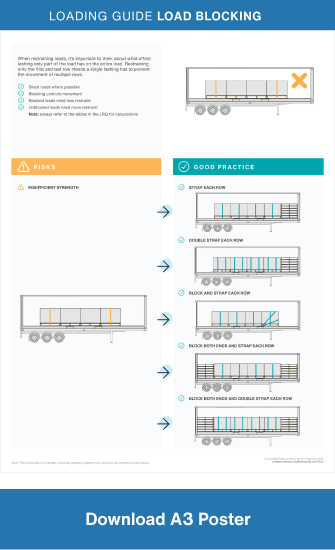Loading Guide - Load Blocking
Loading Guide - Load Blocking
National
Heavy
Vehicle
Regulator
This guide is part of a series of loading guides that provide tips and tricks to help you understand good load restraint. More detailed information on the principles covered by this guide can be found in the Load Restraint Guide 2025.
Introduction
This guide outlines the key considerations for effectively restraining a load that is not blocked by a structure, such as a rated headboard, bulkhead or direct restraint lashings. This guide provides best practice advice for restraining unblocked loads effectively.
Key Principles
The LRG provides two different approaches / classifications depending on whether the load is blocked or unblocked. Where blocking provides at least 0.3g/30% of the forward restraint, the other restraints only need to provide 0.5g/50% to add up to the 0.8g/80% required by the performance standards.
To understand what restraint is provided by the vehicle structure on your vehicle(s) it is advised that you seek information from the manufacturer or have an appropriately qualified engineer assess the vehicle structure and provide a rating.
Example
Restraining only the first and last row in this example means a single lashing must prevent the movement of multiple rows.
In this example we are using a trailer equipped with a non-load rated curtain.
- forward direction - lashing D has to restrain, row A+B+C+D
- rearward direction - lashing A must restrain, row D+C+B+A
- sideways direction - rows B and C have no sideways restraint at all.
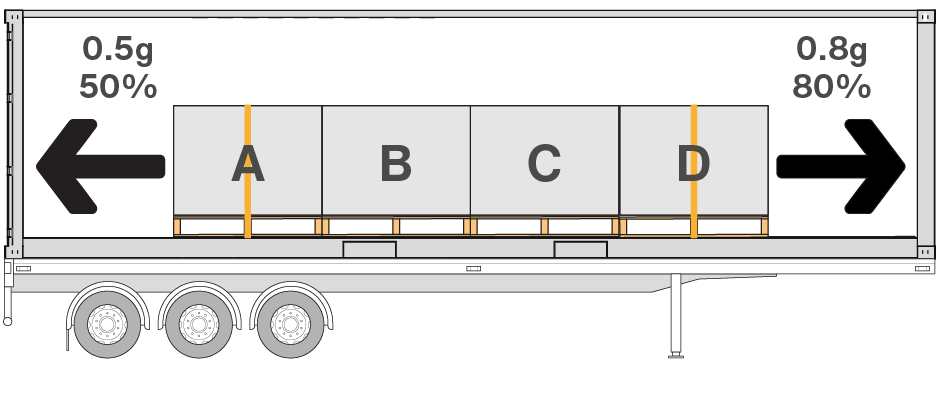
All examples below are based on trailers equipped with non-load rated curtains (if using load rated curtains refer to the information provided by the curtain manufacturer).
Insufficient restraint
- Load not blocked forwards
- Individual rows not properly restrained
- Insufficient load restraint for entire load
This system will fail under heavy braking or when negotiating tight bends
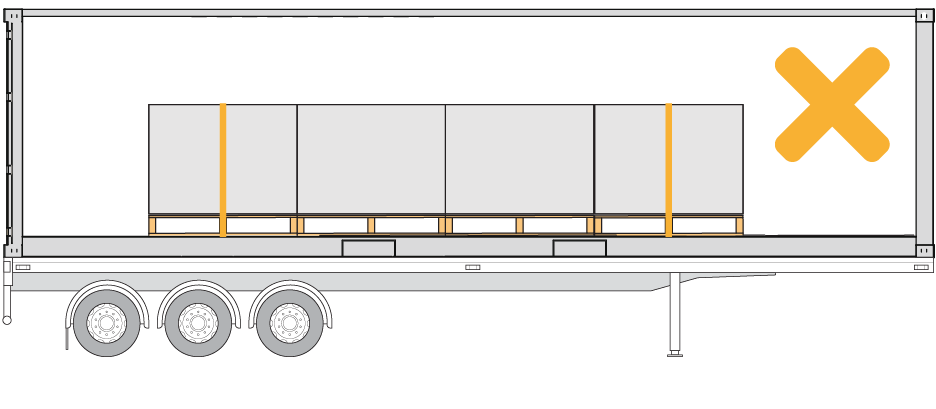
Suggested restraint method
- Load blocked forwards by restraints or additional pallets used to block load
- Individual rows restrained
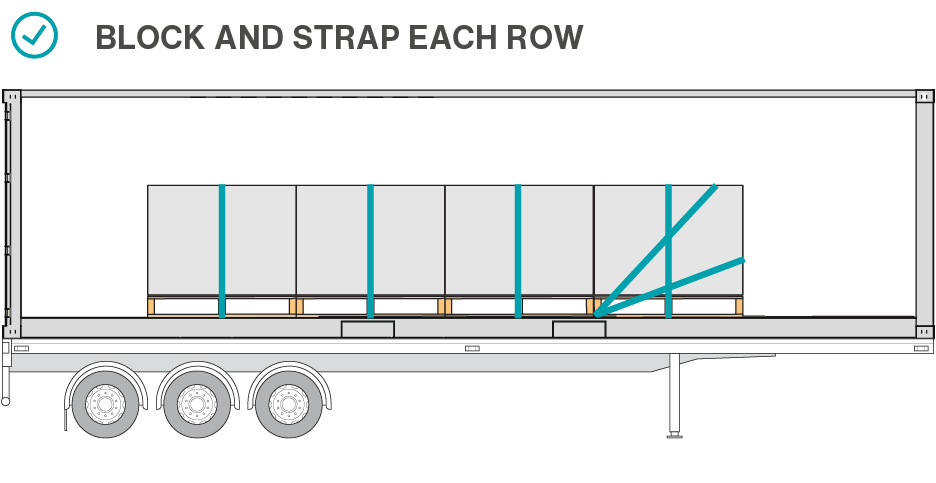
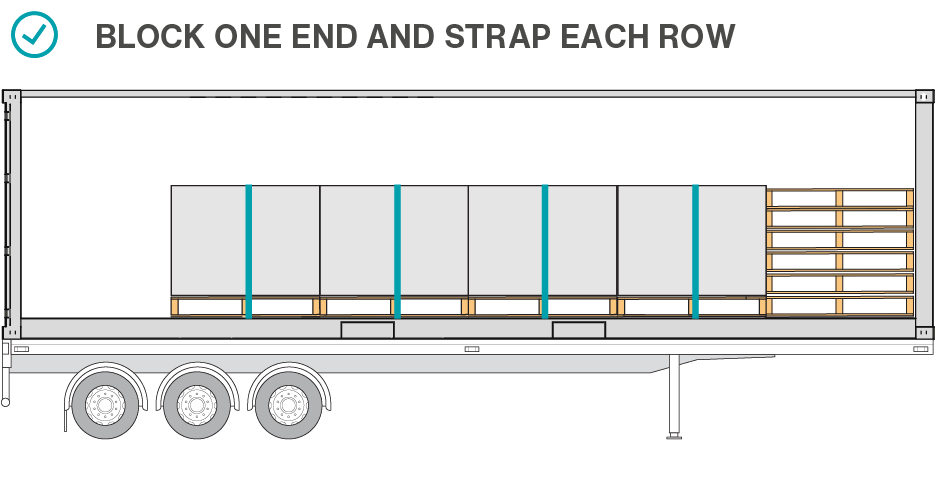
Suggested restraint method
- Load blocked forwards and rearwards
- Individual rows restrained
- Additional pallets used to block load
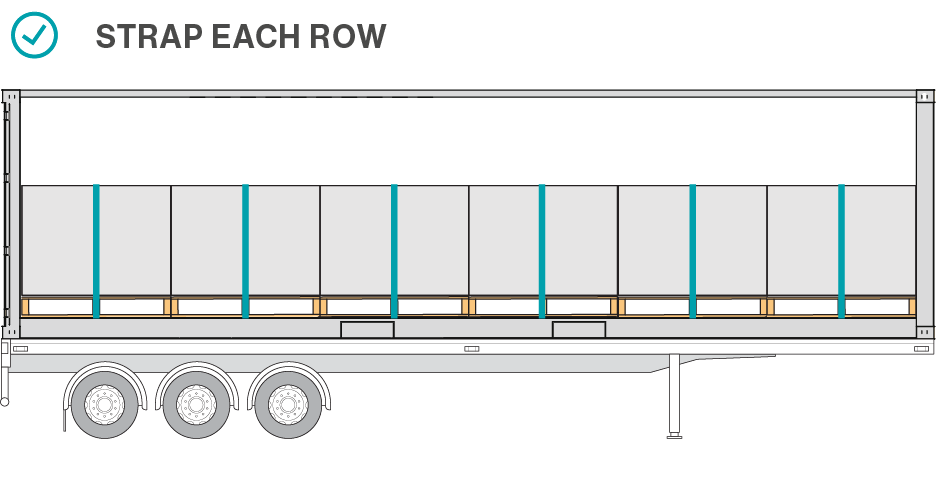
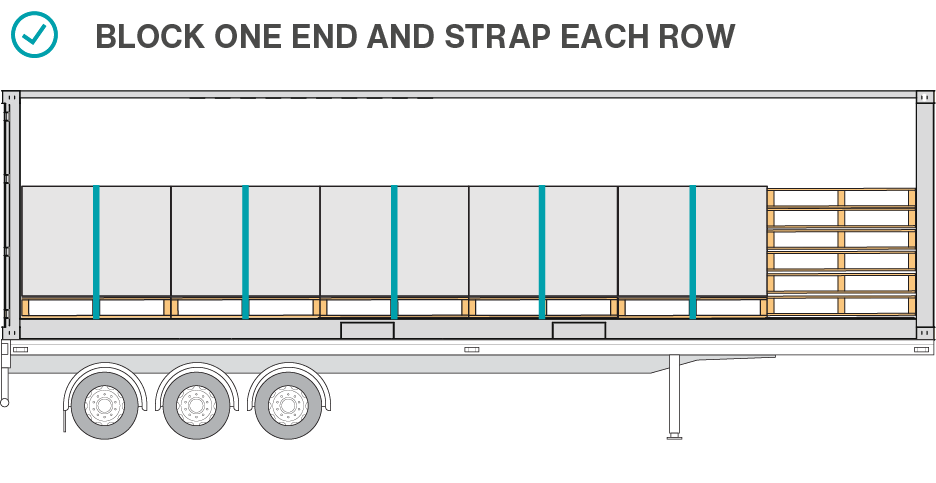
Suggested restraint method
- Load blocked forwards in two locations
- Individual rows restrained
- Additional pallets used to block load
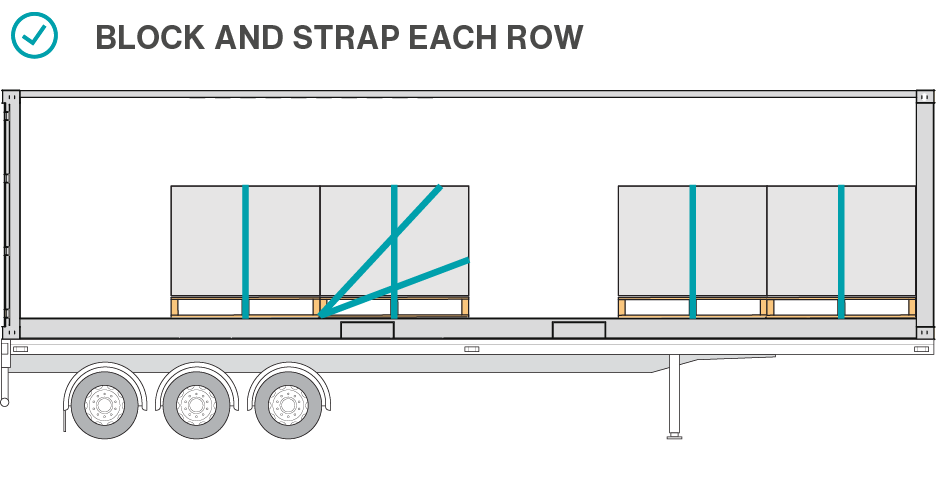
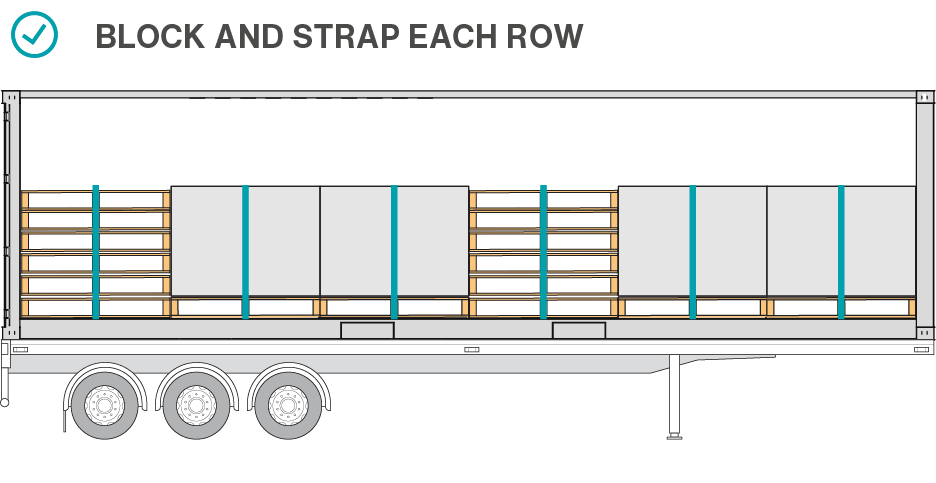
Note: In all the above examples there may be variations that change the number of restraints required, these are just examples. If you are unsure in any way, refer to the Load Restraint Guide or seek advice from an appropriately qualified engineer.

 Accessibility tools
Accessibility tools


